#Battle Group Poland
Explore tagged Tumblr posts
Text




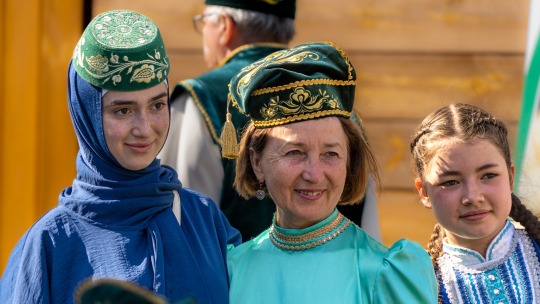

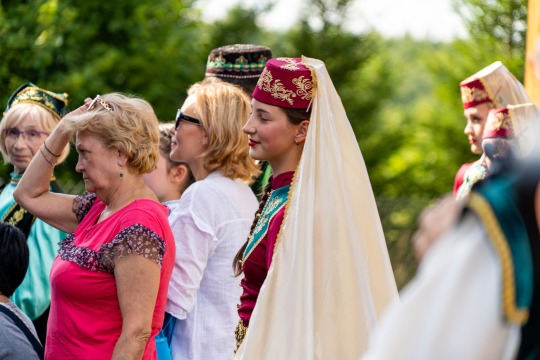
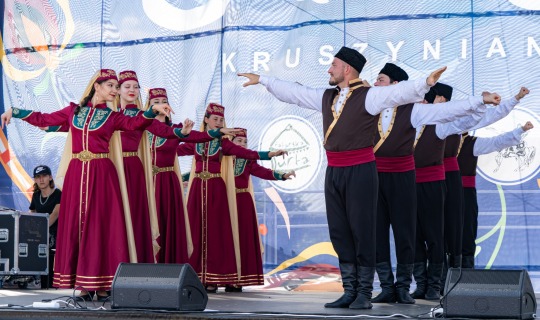
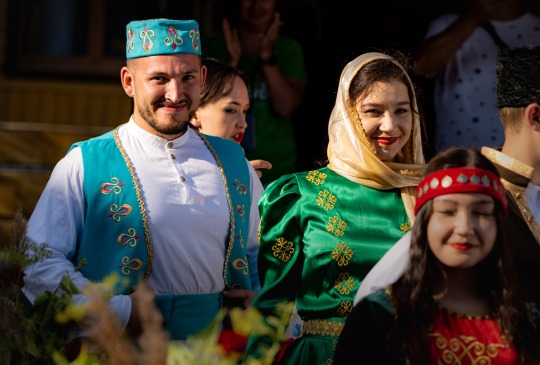
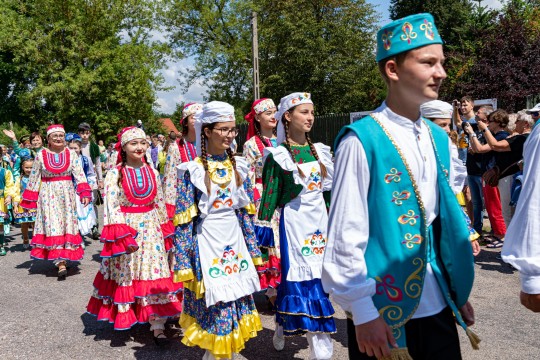
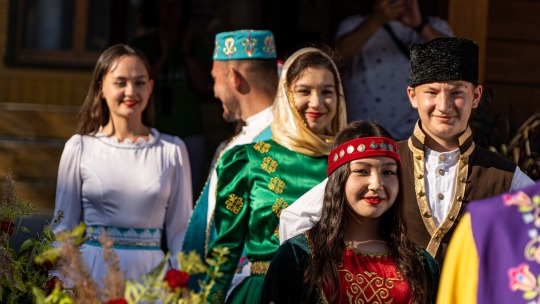
Poland's Muslim Lipka Tatars
Lipka Tatars are Poland's only remaining Indigenous Islamic group. Many of the Polish Tatars belonged to the Polish nobility historically and through out history have been one of the most loyal groups to the Polish state; also having had an influence on the general Polish culture.
Noted for their skills in archery and horse riding, they have been viewed as some of Poland's greatest warriors in the past. Their combat was essential in Poland's victory over the Ottoman Empire during the Battle of Vienna. This fact is contrary to recent western nationalist propaganda, stating that the war was a battle between Christendom and the Islamic world, rather than a war of imperialism. After the war King Jan Sobieski III granted the Lipka Tatars large pieces of land in the Podlasie region of Eastern Poland.
Their origins are in predominately male Crimean Tatars and other settlers from the Golden Horde, who relied on intermarriage with Christian women, leading to early partial assimilation and adoption of Slavic languages. However, they were able to keep their identity and parts of their culture through their ties to Islam. Regardless, over the centuries more and more Tatars were absorbed into the Polish-Lithuanian Common wealth's Catholic and Orthodox populations, with estimates in the 18th century stating that up to 25% of Muslims converted to Christianity- partially motivated by violent peasant drawback due to the privileges bestowed onto them. Eventually this absorption reached its height during the inter-war and post-World War II period of Poland, in part due to assimilative policies. These days most Lipka Tatar descedants simply identify as ethnic Poles, with many Poles not aware of their ancestry. A prominent example of this is Polish-American personality Martha Stewart who only recently discovered that she is of partial Lipka Tatar ancestry, after partaking in a television program dedicated to geneaology.
184 notes
·
View notes
Text

• Stanisław Sosabowski
Stanisław Franciszek Sosabowski was a Polish general in World War II. He fought in the Polish Campaign of 1939 and at the Battle of Arnhem (Netherlands), as a part of Operation Market Garden, in 1944 as commander of the Polish 1st Independent Parachute Brigade.
Stanisław Sosabowski was born on May 8th, 1892 in Stanislau, in what was then Austria-Hungary and is now Ivano-Frankivsk in western Ukraine. His father was a railway worker. Sosabowski graduated from a local gymnasium and in 1910 he was accepted as a student of the faculty of economy of the Jagiellonian University in Kraków. However, the death of his father and the poor financial situation of his family forced him to abandon his studies and return to Stanislau. There he became a member of Drużyny Strzeleckie, a semi-clandestine Polish national paramilitary organisation. He was soon promoted to the head of all Polish Scouting groups in the area. In 1913, Sosabowski was drafted into the Austro-Hungarian Army. After training, he was promoted to the rank of corporal, serving in the 58th Infantry Regiment. After the outbreak of World War I he fought with his unit against the Imperial Russian Army in the battles of Rzeszów, Dukla Pass and Gorlice. For his bravery, he was awarded several medals and promoted to first lieutenant. In 1915, he was badly wounded in action and withdrawn from the front. In November 1918, after Poland regained its independence Sosabowski volunteered for the newly formed Polish Army, but his wounds were still not healed and he was rejected as a front-line officer. Instead, he became a staff officer in the Ministry of War Affairs in Warsaw.
After the Polish-Soviet War Sosabowski was promoted to major and in 1922 he started his studies at the Higher Military School in Warsaw. After he finished his studies he was assigned to the Polish General Staff. Promoted to lieutenant colonel, in 1928 he was finally assigned to a front-line unit, the 75th Infantry Regiment, as commanding officer of a battalion. The following year he was assigned to the 3rd Podhale Rifles Regiment as its deputy commander. From 1930 he was also a professor of logistics at his alma mater. In 1937 Sosabowski was promoted to colonel and became the commanding officer of the 9th Polish Legions Infantry Regiment stationed in Zamość. In January 1939 he became the commander of the prestigious Warsaw-based 21st Infantry Regiment. According to the Polish mobilisation scheme, Sosabowski's regiment was attached to the 8th Infantry Division. Shortly before the German invasion of Poland started his unit was moved from its garrison in the Warsaw Citadel to the area of Ciechanów, where it was planned as a strategic reserve of the Modlin Army. On September 2nd, the division was moved towards Mława and in the early morning of the following day it entered combat in the Battle of Mława. Although the 21st Regiment managed to capture Przasnysz and its secondary objectives, the rest of the division was surrounded by the Wehrmacht and destroyed. After that Sosabowski ordered his troops to retreat towards Warsaw. Sosabowski was ordered to man the Grochów and the Kamionek defensive area and defend Praga, the eastern borough of Warsaw, against the German 10th Infantry Division. During the Siege of Warsaw the forces of Sosabowski were outmanned and outgunned, but managed to hold all their objectives. When the general assault on Praga started on September 16th, the 21st Infantry Regiment managed to repel the attacks of German 23rd Infantry Regiment and then successfully counter-attacked and destroyed the enemy unit. After this success, Sosabowski was assigned to command all Polish troops fighting in the area of Grochów. Despite constant bombardment and German attacks repeated every day, Sosabowski managed to hold his objectives at relatively low cost in manpower. On September 26th, 1939, the forces led by Sosabowski bloodily repelled the last German attack, but two days later Warsaw capitulated.
Following the Polish surrender, Sosabowski was made a prisoner of war and interned at a camp near Żyrardów. However, he escaped and remained in Warsaw under a false name, where he joined the Polish resistance. He was ordered to leave Poland and reached France to report on the situation in occupied Poland. After arriving in Paris, The Polish government in exile assigned him to the Polish 4th Infantry Division as the commanding officer. Initially, the French authorities were very reluctant to hand over the badly needed equipment and armament for the Polish unit. Sosabowski's soldiers had to train with pre-World War I weapons. In April 1940, the division was moved to a training camp in Parthenay and was finally handed the weapons awaited since January, but it was already too late to organise the division. Out of more than 11,000 soldiers, only 3,150 were given arms. By June 1940, Sosabowski with approximately 6,000 Polish soldiers arrived at La Pallice, whence they were evacuated to Great Britain. Upon his arrival in London, Sosabowski turned up at the Polish General Staff and was assigned to 4th Rifles Brigade that was to become a core of the future 4th Infantry Division. The unit was to be composed mainly of Polish Canadians, but it soon became apparent that there were not enough young Poles in Canada from which to create a division. Then, Sosabowski decided to transform his brigade into a Parachute Brigade, the first such unit in the Polish Army. The volunteers came from all the formations of the Polish Army. In Largo House in Fife, a training camp was built and the parachute training was started. Sosabowski himself passed the training and, at 49 years of age, made his first parachute jump. In October 1942 the Brigade was ready for combat and was named the 1st Independent Parachute Brigade. Since the Polish General Staff planned to use the Brigade to assist a national uprising in Poland, the soldiers of the 1st Polish Para were to be the first element of the Polish Army in Exile to reach their homeland. Hence the unofficial motto of the unit: by the shortest road (najkrótszą drogą).
In September 1943, Lieutenant-General Frederick Browning proposed that Sosabowski reform his unit into a division and fill the remaining posts with British troops. Sosabowski himself would be assigned to the newly formed division and promoted to general. However, Sosabowski refused. Nevertheless, on June 15th, 1944 he was promoted to Brigadier General. In early August 1944, news of the Warsaw Uprising arrived in Great Britain. The Brigade was ready to be dropped by parachute into Warsaw to aid their comrades from the underground Polish Home Army, who were fighting a desperate battle against overwhelming odds. However, the distance was too great for the transport aircraft to make a round trip and access to Soviet airfields was denied. The morale of the Polish troops suffered badly and many of the units verged on mutiny. The British staff threatened its Polish counterpart with disarmament of the Brigade, but Sosabowski retained control of his unit. Finally, Polish Commander in Chief Kazimierz Sosnkowski put the Brigade under British command, and the plan to send it to Warsaw was abandoned.
During the planning for Operation Market Garden, Sosabowski expressed serious concerns regarding the feasibility of the mission. Among Sosabowski's concerns were the poorly conceived drop zones at Arnhem, the long distances between the landing zones and Arnhem Bridge and that the area would contain a greater German presence than British intelligence believed. Despite Sosabowski's concerns and warnings from the Dutch Resistance that two SS Panzer Divisions were in the operations area, Market Garden proceeded as planned. The Polish 1st Independent Parachute Brigade was among the Allied forces taking part in Market Garden. Due to a shortage of transport aircraft, the brigade was split into several parts before being dropped into the battle. A small part of the brigade with Sosabowski was parachuted near Driel on September 19th, but the rest of the brigade arrived only on September 21st at the distant town of Grave, falling directly on the waiting guns of the Germans camped in the area. The brigade's artillery was dropped with the British 1st Airborne Division. Three times Sosabowski attempted to cross the Rhine to come to the assistance of the surrounded 1st Airborne Division. Unfortunately, the ferry they hoped to use had been sunk and the Poles attempting to cross the river in small rubber boats came under heavy fire. Even so, at least 200 men made it across the river and reinforced the embattled British paratroopers. Despite the difficult situation, at a staff meeting on September 24th, Sosabowski suggested that the battle could still be won. He proposed that the combined forces of XXX Corps, under Lieutenant-General Brian Horrocks, and the Polish 1st Independent Parachute Brigade should start an all-out assault on the German positions and try to break through the Rhine. This plan was not accepted, and during the last phase of the battle, on 25th and 26th of September, Sosabowski led his men southwards, shielding the retreat of the remnants of the 1st Airborne Division. Casualties among the Polish units were high, approaching 40%. After the battle, on October 5th, 1944, Sosabowski received a letter from Field Marshal Bernard Montgomery, commander of the Anglo-Canadian 21st Army Group, describing the Polish soldiers as having fought bravely and offering awards to ten of his soldiers. However, on October 14th, 1944, Montgomery wrote another letter, this time to the British commanders, in which he scapegoated Sosabowski for the failure of Market Garden. Sosabowski was accused of criticizing Montgomery, and the Polish General Staff was forced to remove him as the commanding officer of his brigade on December 27th, 1944.
Sosabowski was eventually made the commander of rearguard troops and was demobilized in July 1948. Shortly after the war Sosabowski succeeded in evacuating his wife and only son from Poland. Like many other Polish wartime officers and soldiers who were unable to return to Communist Poland on pain of repercussions including death or disappearance, he settled in West London. He found a job as a factory worker at the CAV Electrics assembly plant in Acton.He died in London on September 25th, 1967. In 1969, Sosabowski's remains were returned to Poland, where he was reinterred at Powązki Military Cemetery in Warsaw. In The Hague, on May 31st, 2006, Queen Beatrix of the Netherlands awarded the Military Order of William to the Polish 1st Independent Parachute Brigade. The brigade's commander, Sosabowski, was posthumously awarded the "Bronze Lion". On June 1st, a ceremony was held at Driel, the town where the Polish 1st Independent Parachute Brigade fought. Among the speakers at the ceremony were the mayor of Overbetuwe, as well as Sosabowski's grandson and great-grandson. Sosabowski was portrayed by Gene Hackman in the 1977 war film A Bridge Too Far. In the summer of 2012 1st Airborne Major Tony Hibbert made a video appeal for Sosabowski to be pardoned and honoured.
#second world war#world war 2#world war ii#wwii#military history#airborne history#airborne#polish history#poland#a bridge too far#unsung heroes#market garden#polish airborne
69 notes
·
View notes
Note
Is saying "intersex and/or mesosex" the same way of saying "trans and/or nonbinary"? Sorry I'm trying to (un)learn, I don't want to be seen as insensitive
No, mesosex should be thought of as a subset of intersex. I'd just say intersex. 👍️
I'm gonna give you a wall of text of context so upfront a TLDR: 😅
TLDR: positioning mesosex as in between perisex and intersex is like positioning bisexual as in between queer and not-queer. Intersex people are organizing for inclusive views of intersex and trying to create a middle ground between intersex & perisex plays into conservative efforts to divide and conquer us. 🧑🏫
So a big difference between being intersex and being trans/nonbinary comes from the role of medicine being far, far more powerful in its control and oppression of intersex people. In a lot of ways intersex is more like disability than like other queer identities. So much of intersex identity is gatekept by doctors. Intersex people are often told they're intersex by a doctor in a context of telling them they are disordered and broken. Fostering community amongst intersex people is hard because so many of us have been conditioned by doctors to think of themselves as rare freaks.
Right now we in the intersex community are fighting a kind of desperate battle for people to understand that it is intersex people who decide who is and isn't intersex, as opposed to it being up to doctors. And the intersex community consistently says that people with PCOS, Poland Syndrome, or even no diagnosis, who feel that their experiences line up with being intersex are intersex.
Meanwhile TERFs and other conservatives are pushing real hard to keep the definition of intersex as narrow as possible. They don't want intersex people to be common or for us to find community. They're invested in a narrative that intersex people are rare, and are disorderd men/women.
Right now, the track record of treating mesosex as not intersex has unfortunately been that it reinforces those conservative narratives. It's gotten used to imply that people with PCOS aren't really intersex, that they are mesosex instead. Same for undiagnosed intersex people. 😭
Even though this is not what I intended for the term, seeing what's happened with it in the wild it's been honestly scary and upsetting seeing this term get weaponized against an inclusive view of what intersex means. (And more experienced intersex folks raised concern about this well in advance 😨.)
Intersex being an umbrella category I think there is value in having microlabels within the umbrella category, which is why I updated my definition of mesosex rather than abandon the term altogether.
But yeah I would definitely steer far away from treating mesosex as though it's in between intersex and perisex - it's really not at all analogous to being nonbinary. I'd say a better analogy is that treating mesosex as if it is between intersex and perisex is like treating bisexual as being in between queer and non-queer.
The stakes are political inclusion and organizing - politically speaking, any effort to create a group between queer and non-queer generally serves to weaken the collective organizing of queer people. Same deal with intersex. Hope that clarifies things. 💜
#intersex#mesosex#perinormativity#intersexism#intersex terminology#actuallyintersex#actually intersex
391 notes
·
View notes
Photo

Battle of Smolensk in 1941
The Battle of Smolensk in 1941 ended in victory for Nazi Germany and its Axis allies against the USSR's Red Army during Operation Barbarossa in the Second World War (1939-45). Smolensk on the Dnieper (Dnepr/Dnipro) river was the traditional gateway to Moscow but was captured by the end of July using a combination of tank and infantry divisions.
The Axis forces had used a large pincer movement to encircle the Red Army west of Smolensk. After the battle, around 340,000 prisoners were taken, and the Russian capital was now in the invaders' sights. Progress through the USSR had come at a high cost in men and material, though, while the Red Army remained ready and willing to fight on. The Battle of Smolensk and its high rate of attrition revealed that the Blitzkrieg ('lightning war') tactics of using fast-moving armoured divisions with air and infantry support while attacking on a narrow front could not work in the longer term in the vast spaces of the Soviet Union.
General Guderian, 1940
Imperial War Museums (CC BY-NC-SA)
Operation Barbarossa
Adolf Hitler (1889-1945), the leader of Nazi Germany, was confident after swift victories in the Low Countries and France in 1940, that he could make even greater territorial and resource gains in 1941 by attacking the USSR. The Nazi-Soviet Pact, signed between Germany and the USSR back in August 1939, was shown to be a mere agreement of convenience until Hitler was ready to wage war in the east. Hitler, as he had always promised, was determined to find Lebensraum ('living space') for the German people, that is, new lands in the east where they could find resources and prosper.
Operation Barbarossa, the code name for the attack on the USSR, was launched on 22 June 1941. The overall objective was to smash the USSR's Red Army west of the Western Dvina and Dnieper rivers and take control of several key cities, which would give Germany and its Axis allies access to natural resources from Leningrad (Saint Petersburg) to Ukraine. The invading force, made up of German, Slovakian, Italian, Romanian, and Finnish forces, amongst others, consisted of 3.6 million men in 153 divisions, 3,600 tanks, and 2,700 aircraft (Dear, 86). The overall commander was Field Marshal Walter von Brauchitsch (1881-1948). With the largest army in history, Hitler assured his generals that victory would come before the winter.
The Axis force was divided into three army groups: North, Centre, and South. At the Battle of Białystok-Minsk in June-July 1941, four Soviet armies commanded by General Dmitry Grigorevich Pavlov (1897-1941) were overwhelmed by Army Group Centre commanded by Field Marshal Fedor von Bock (1880-1945). The invaders sped through Soviet-occupied eastern Poland and Belarus using the Blitzkrieg tactics that had served them so well in Poland and Western Europe. Blitzkrieg involved a combination of massive air support with artillery bombardments and fast-moving armoured and motorised infantry divisions. With Minsk captured by a giant pincer movement (Zangenangriff), Bock's two main panzer commanders, Heinz Guderian (1888-1954) and Hermann Hoth (1885-1971), sped on eastwards. The next target was the city of Smolensk on the Dnieper.
Map of Operation Barbarossa
Simeon Netchev (CC BY-NC-ND)
Continue reading...
22 notes
·
View notes
Text

THURSDAY HERO: Rabbi Herschel Schacter
Rabbi Herschel Schacter was a young U.S. Army chaplain who helped traumatized Holocaust survivors rebuild their lives, and later became an influential leader in the Orthodox movement and a strong advocate for Soviet Jewry.
Herschel Schacter was born in Brooklyn in 1917, the son of immigrants from Poland and the youngest of ten siblings. His family was religious, and he was educated at the finest yeshivas before obtaining smicha (rabbinic ordination) in 1941. Rabbi Schacter served as a pulpit rabbi for a year before enlisting in the Army after Pearl Harbor. After attending Army Chaplain school at Harvard, he was sent to Europe with the VIII Corps and fought in the Battle of the Bulge.
Rabbi Schacter was one of the liberators of the Buchenwald concentration camp. He stayed in Germany for two and a half months after the war, tending to the broken spirits of survivors, most of whom had lost their entire families. Many were the only survivor from their entire town; everyone they ever knew had been murdered. A famous photograph shows him leading Shavuot services at Buchenwald (above). This photo occupies an entire wall at Israeli Holocaust Memorial Yad Vashem.
What Rabbi Schacter saw at Buchenwald was hell on earth. The inmates who were still alive – barely -were emaciated, lying on filthy planks and covered in lice, hollow-eyed ghosts blinking in the sunlight and without the energy to even lift their heads. The stench of rotting flesh and feces was overwhelming.
Rabbi Schacter noticed Yisrael Meir Lau, 7 years old, hiding behind a pile of corpses. Known as Lulek, the child had lost most of his family and had been on his own since age 5. Rabbi Schacter cared for the boy and helped him immigrate to Israel, where he would one day become Chief Rabbi.
Rabbi Schacter’s son Jacob, a prominent Orthodox rabbi and professor at Yeshiva University, wrote in a piece for Tablet Magazine, “My father spent the rest of his life describing what he saw in Buchenwald and what he did during his 10 weeks there. His work focused on a number of different areas: he tended to the psychological needs of survivors; he worked hard to reunite families; he founded a kibbutz outside Weimar for young survivors preparing to make aliyah [move to Israel]; and he organized a transport of children to Switzerland.”
Another story that illustrates Rabbi Schacter’s massive impact concerns Yoav Kimmelman, a 16 year old from a Hasidic home who lost every single member of his large extended family, around 60 people. The Holocaust destroyed Yoav’s faith and identity as a Jew. According to Rabbi Jacob Schacter, Yoav was “done with God, done with Jewish life, done with Jewish destiny, done with the Jewish people.” Rabbi Herschel Schacter reached out – literally – and singlehandedly brought Yoav back to Jewish life. It happened when Rabbi Schacter was taking 200 child survivors to Switzerland. He wanted young Yoav to go with him, but the boy had no interest in being around fellow Jews and he refused to go. Rabbi Schacter asked him to come to the train station to say goodbye and while there, the rabbi reached down and physically dragged Yoav onto the train. The teen was angry and sullen, but the rabbi convinced him to join a minyan and read Torah in the DP camp. Long story short, Yoav Kimmelman remained religious and at his death, he left 80 descendants, all of them Torah Jews. “That’s all because my father had the guts to pull him onto that train when it left the station,” said Rabbi Jacob Schacter.
Rabbi Herschel Schacter became a prominent leader of Orthodox Judaism in America, helping to rebuild from the ashes and grow the movement. He was elected president of the Conference of Presidents of Major Jewish Organizations in 1968. Dr. Rafael Medoff, in his book “The Rabbi of Buchenwald,” wrote: “He was the first Orthodox rabbi to reach that level of leadership. Until then others saw Orthodox leaders as fit to be heads of Orthodox groups, but not larger ones. Rabbi Schacter broke that mold. He was sufficiently savvy and sophisticated to represent the entire [Jewish] community, not just the Orthodox minority.”
At the very beginning of the movement to free Soviet Jewry, in 1956, Rabbi Schacter was part of the first rabbinical delegation to visit the USSR since 1917. He then went to Hungary to help Jewish refugees flee during the Hungarian revolution.
Rabbi Schacter served as a pulpit rabbi in the Bronx for more than 60 years and was known as a brilliant and inspiring orator, beloved by his congregation. He passed away in 2013 at age 95 and was survived by his beloved wife Pnina, two children, four grandchildren, and eight great-grandchildren. Pnina Schacter died in 2018.
For healing the broken spirits of Holocaust survivors and helping them rebuild their lives, and for his devotion to the Jewish people and his decades of leadership, we honor Rabbi Herschel Schacter as this week’s Thursday Hero.
61 notes
·
View notes
Text
December 19th, 1777, the day George Washington marched his troops into Valley Forge!
Hello everyone! Today's the day George Washington and his army moved to the Valley Forge Encampment for the winter (except today may not be the day because while most sources claim it was the 19th a select few say it was the 18th also I live in the Southern Hemisphere and I'm not entirely sure what day it is for you North-folk). Also sorry for any bad quality, I'm writing this at 1:12 AM on a Wednesday and I have not slept since Sunday.
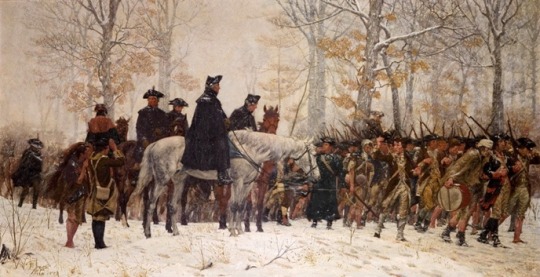
Anyway about Valley Forge:
George Washington and his soldiers moved into the Valley Forge encampment on the 19th of December, 1777. George Washington chose to stay at the Valley Forge for multiple reasons, number 1 being that it wasn't too far from the capital of Philadelphia, which at the time was being occupied by the British, and the Continentals had to make sure that they kept an eye on the redcoats because if they didn't then the redcoats could attack American citizens or take over random people's houses, something that they did rather frequently (think the Quartering Act), and the army wouldn't be there to fight back or wouldn't know that they were occupying a certain house. Also, they needed to know where the redcoats were in case they moved, because if they moved, they might be going off to battle and trying to do a surprise attack on the Continentals. Knowing where the British were made it so that surprise attacks couldn't be used against the Americans. + Valley Forge wasn't too close to the Philadelphia countryside, so the Army wouldn't bother the local farmers with the noise of thousands of soldiers training every day. And the Valley Forge was on high ground and surrounded by hills, so it'd be hard for the British to get to them.
About 11,000 soldiers and a few hundred of their wives, children, and friends made it to the Valley Forge, and if you're particularly observant, you may have noticed that in the image above, the soldiers aren't wearing any one uniform. This is because the Continental Army at this time was comprised of mainly little militia groups with their own distinct uniforms. Anyway, Valley Forge wasn't unenjoyable because of bad weather, but rather bad weather combined with a severe lack of supplies like shoes, shirts (really any clothing item), and food and drink. Washington estimated that nearly a third of his men didn't have shoes during the journey to Valley Forge, and quite a few of them didn't have a frock coat to protect them from the winter wind and rain. When they arrived at the camp, Washington gave orders to all of his men to build their own wooden huts and find some straw to use as bedding, as they didn't have enough blankets for everyone. Then Washington was informed by another senior officer that they had 25 barrels of flour and a little salt pork, and they were meant to somehow use that to feed the whole army. Washington wrote to Henry Laurens, the president of Congress at the time, about this issue. Washington and his aides-de-camp stayed in a two-story house made of stone, and Washington spent much of his time writing to Congress, asking for more supplies and defending himself against Congress' claims that he wasn't a good military leader and that he wanted total power, and he complained about the Conway Cabal (a group of three men who Congress decided to give as much power as the Commander-in-Chief). But outside of Washington's personal struggles, the Valley Forge encampment was all about training. When the Continentals were there, they trained for battle constantly and learned how to use bayonets properly, fight in a disciplined way, march in a near perfect straight line and execute commands quickly on the battle field.
Many generals helped George Washington during his struggle, both to show his competence and with his men. Lafayette got officers from Europe (mainly France and Poland) to help with the war; Henry Knox helped build defensive walls on the Valley Forge's hills to help the Continentals protect themselves against the British; Nathanael Greene and Anthony Wayne searched for farm animals from the country side; and probably most famously, Baron Frederich von Steuben taught the Americans all about fighting and took care of all of the training in fact he added some of his lessons into the Army's blue book and it was the official US military training manual for decades. Even Martha Washington helped by managing Washington's household, helping him with his letters to Congress, and bringing some cheer to the camp by entertaining the guests. By the spring of 1777, life at Valley Forge wasn't half bad. Washington figured out a way he could get enough supplies into camp, and everyone happily celebrated when they heard that France was officially their ally in the war. In June 1778 the Continentals happily marched out of the Valley Forge with heaps of new knowledge that they'd use to help them on the battlefield and eventually beat the British with.
#amrev#american revolution#american revolutionary war#american history#history#revolutionary war#valley forge#george washington#on this date#on this day#18th century#18th century america#revwar#military history
77 notes
·
View notes
Text
The Clans of the Serpent Lake
Author's Note Here is lore for my new clangen playtrough. Im sorry for not continuing Spottedstar's Reign as I should, I just lack motivation for it. Lore is based on a real lake. Points to those who guess which lmao. The only hit I will give is that it's in Poland. Regardless, this thing absorbed me and Im having fun writing stories based on these little pixel guys. Note though, ShoreClan is not currently being played. Three clans is already a lot, and I still need to decide how I tackle the missing clan.

Once, the lake was a river. But just like the seasons change, so the unknowable whims of twolegs.
There were sings years before The Flood began. It started with those most sensitive to the ancestors and omens beggining to feel constanly uneasy. With seasons it progressed into unclear visions and then dreams. Dreams of water, drowning, serpents devouring each other. Alongside that, new twolegs began showing up with increasing frequency, seemingly frustrating the ones that already lived by the rivers. And they began constructing something. A wall so tall it nearly rivaled the hills around.
Reading the clear warnings and guided by their ancestors, the leaders of four Clans decided to leave, before the disaster could strike. And just as they did, the water level began rising.
It was not an easy time. Some cats died, exploring a mostly unknown terrain and trying to figure out how far they should go. Conflict between long time rivals, FalconClan and MossClan did not help. Their hatered run so deep no one could unearth the roots of it. LindenClan tried to keep the peace. After a failed attempt at resolving the conflict that resulted in another bloody battle in which several lives were lost, ShoreClan's leader finally had enough. He gathered his cats and left the Clans, proclaiming that ShoreClan will not share their doomed fate. Since that day, no one saw ShoreClan ever again.
A vision came. A dying hawk in the snow. When it breathed it's last breath, a spring came. Linden's sapling grew. Falcons soared above. Moss quietly grew in the warm shadow of a forest. And just as was foretold, when Hawkstar of FalconClan lost his last life, spring has arrived. And so, the age of Serpent River was no more, and the age of Serpent Lake began.

MossClan Rivals to FalconClan. The feud is generations long and keeps getting reignited ever so often. The roots of it have been forgotten. MossClan claim to be the oldest group, with great sages of the past long traveling to the river in a great migration. They believe in magic, the power of futuresight in their ancestors and omens. They can be quite superstitious, but arent beyond reason. Instead of mourning, they celebrate deaths, believeing that those who die, become something greater after death. Some only respect those who died in their elder years, but the belief overall is that even someone dying young can gain knowleadge and guide cats to avoid early death. So the living cats pray to kits who died young for safety of their newborns, apprentices pray to other apprentices to avoid trouble etc. Generally, living to old age is both a privilage and the highest achievement for the cat.

FalconClan Rivals to MossClan, they have a long history of wars and hostility, despite being considered the youngest group. Falcons are war-like, great fishers and swimmers. They only accept strong loner and rogues, who can hunt. They don't believe in prophecies, but still respect the dead, leaving them gifts at the graves and singing songs of great battles. Falcons also believe their ancestors can warn them, but its strictly in present time. They see Mosses as crazy religious lunatics who constantly excuse their atrocities with either prophecy or ancestors will.

LindenClan The largest clan, territory and numbers wise far exceeding the others. They are historians who focuse on bloodlines and accurate retellings. They have a special rank that focuses on that, though all cats are encourage to contribute and help the lore masters. They are also lead by a dynastic rule. Eldest child inherits leader's position and the leader typically becomes mentor of their heir. They can be seen as quite nosy and treat borders more loosely. Some used it to cause harm, so LindenClan put stricter rules on permission to cross borders.

ShoreClan Mysterious fourth clan, who left the alliance, believing the others would lead to their ventual doom. Back when they still lived close, they were known to be a clan of loners and house cats, living closest to twolegs. Their rank structure resembled more a colony than a clan, the leaders often being either the oldest female or male with the most mates and kits. Despite that, they were not a dynastic rule. Those popular or dominant within the clan often being chosen for deputy more by the clan cats than the leader. In general, the concept of deputy was far more undefined and fluid. Only in recent times they began attempting to more regulate the voting system and ranks. This was not easy, trail and error lead to internal conflicts and civil war, which traumatized many within ShoreClan. LindenClan historians believe this trauma resulted in ShoreClan's negative attidtude towards other Clans that lead to their departure.
#warrior cats#warrior cats oc#warriors oc#warriors#clangen#clangen oc#warriors erin hunter#clans of the serpent lake#warrior cats lore#mossclan#lindenclan#falconclan#shoreclan#clans of the serpent lake lore
8 notes
·
View notes
Text
Trump’s anti-Ukraine view dates to the 1930s. America rejected it then. Will we now?

(Illustration: Brian Stauffer for The Washington Post)

This opinion column by Robert Kagan reminds us that history appears to be repeating itself. Trump's America First movement is an echo of the 1930s/1940s isolationist, neo-fascist America First movement that tried to keep the U.S. out of WWII. This is a gift🎁link, so you can read the entire article, even if you don't subscribe to The Washington Post. Below are some excerpts:
Many Americans seem shocked that Republicans would oppose helping Ukraine at this critical juncture in history....Clearly, people have not been taking Donald Trump’s resurrection of America First seriously. It’s time they did. The original America First Committee was founded in September 1940. Consider the global circumstances at the time. Two years earlier, Hitler had annexed Austria and invaded and occupied Czechoslovakia. One year earlier, he had invaded and conquered Poland. In the first months of 1940, he invaded and occupied Norway, Denmark, Belgium and the Netherlands. In early June 1940, British troops evacuated from Dunkirk, and France was overrun by the Nazi blitzkrieg. In September, the very month of the committee’s formation, German troops were in Paris and Edward R. Murrow was reporting from London under bombardment by the Luftwaffe. That was the moment the America First movement launched itself into the battle to block aid to Britain. [...] This “realism” meshed well with anti-interventionism. Americans had to respect “the right of an able and virile nation [i.e. Nazi Germany] to expand,” aviator Charles Lindbergh argued. [...] Sen. Josh Hawley (R-Mo.) has called for the immediate reduction of U.S. force levels in Europe and the abrogation of America’s common-defense Article 5 commitments. He wants the United States to declare publicly that in the event of a “direct conflict” between Russia and a NATO ally, America will “withhold forces.” The Europeans need to know they can no longer “count on us like they used to.” [...] Can Republicans really be returning to a 1930s worldview in our 21st-century world? The answer is yes. Trump’s Republican Party wants to take the United States back to the triad of interwar conservatism: high tariffs, anti-immigrant xenophobia, isolationism. According to Russ Vought, who is often touted as Trump’s likely chief of staff in a second term, it is precisely this “older definition of conservatism,” the conservatism of the interwar years, that they hope to impose on the nation when Trump regains power. [...] Like those of their 1930s forbears, today’s Republicans’ views of foreign policy are heavily shaped by what they consider the more important domestic battle against liberalism. Foreign policy issues are primarily weapons to be wielded against domestic enemies. [...] The GOP devotion to America First is merely the flip side of Trump’s “poison the blood” campaign. It is about the ascendancy of White Christian America and the various un-American ethnic and racial groups allegedly conspiring against it. [emphasis added]
Use the gift link above to read the entire article. It is worth reading.
____________ Illustration: The above illustration by Brian Stauffer originally drew me to this article. It does a great job of succinctly illustrating the Trump GOP's rightward march towards isolationism (and Putin-style dictatorship). [edited]
#america first#wwii era#republicans#trump#ukraine#history repeating itself#american history#robert kagan#the washington post
45 notes
·
View notes
Text
Reflecting the instincts of a cold war veteran, Joe Biden’s strategy was familiar: contain the conflict. When the US president spoke in Warsaw in March 2022, a month after Russia’s full-scale invasion of Ukraine, he drew a red line at Vladimir Putin’s toes. “Don’t even think about moving on one single inch of Nato territory,” he warned.
The western allies would provide weapons and aid to Kyiv, impose sweeping economic and financial sanctions on Moscow and reduce the rouble to “rubble”, Biden vowed. Though not a Nato member, the US would help Ukraine win this symbolic battle for freedom and democracy. But it would not directly confront Russia unless Russia first attacked Nato.
Thirty months on, Biden’s containment strategy is failing miserably. Like an untreated cancer, Ukraine’s crisis metastasises uncontrollably. Far from being confined to the mud and ice of the Donbas, the war’s spreading, toxic fallout grows more globally destructive by the day. It contaminates and blights everything it touches. True, a “hot” war between Russia and Nato has been avoided so far. Yet Polish and Romanian territory has been affected by stray missiles and maritime attacks. The entire Black Sea region is embroiled, as is Belarus. Putin claims that the west is already waging war on Russia and threatens it with nuclear weapons. Propagandists vow to vaporise Poland.
The crisis has triggered US-Europe splits in Nato and within the EU. Rows flare over sending troops and long-range missiles to Ukraine, inviting Kyiv to join the alliance, and forging a separate European “defence identity”. France’s newly hawkish stance is cancelled out by German caution.
Neutral Sweden and Finland were panicked into joining Nato. The Baltic republics fear renewed Russian aggression. Hungary and Serbia appease the Kremlin. Italy wavers. No one feels safe.
The war is fuelling right-left political extremism as support surges for Putin’s paid-for populist apologists. In Moldova, last weekend’s EU membership referendum was grossly distorted by what its president, Maia Sandu, called a huge bribery operation by “criminal groups working together with foreign forces” – namely, Kremlin stooges.
Now Moscow is eyeing this weekend’s elections in Georgia where it covertly conspires to ensure pro-western parties lose. Such hybrid warfare – subversion, disinformation, influence operations, cyber-attacks, scams, online trolling – has mushroomed worldwide since 2022, as authoritarian regimes follow Russia’s lead.
Failure to contain the war is encouraging seismic geopolitical shifts, most notably the China-Russia “no-limits” partnership. China’s president, Xi Jinping, gets cheap oil; ostracised Putin gets sanctions-busting dual-use tech plus diplomatic backing. But it’s so much more than that. At last week’s Brics summit – hosted by Putin – Russia, China, India, Brazil and South Africa were joined by Iran, North Korea, Syria, Venezuela and, alarmingly, Nato member Turkey (among many others). Putin envisages a global anti-western alliance, Xi a post-American, China-led 21st-century new world order.
These are no idle dreams. For many second-tier countries, the west’s condemnation of Russian aggression in Ukraine and its refusal to condemn, and active facilitation of, Israeli aggression in Palestine represents an intolerable double standard. Some are switching sides.
What better illustrates the unbounded nature of this inexorably expanding conflict than the startling news that North Korea, in a breath-taking counterpoint to US and UK military intervention in the Korean war nearly 75 years ago, is deploying troops to the Ukraine theatre?
And how appalling that Donald Trump can cynically use Ukraine’s “forever war” to persuade US voters that Democrats like Kamala Harris cannot control a chaotic world, Nato is a con-trick run by freeloading Europeans and the UN is useless.
The war diverts attention from other grave conflicts, from Sudan to Myanmar. Attacks on Kyiv’s grain exports have caused food shortages and price spikes hurting poorer countries. It disrupts cooperative action on climate; indeed, it has greatly increased greenhouse gas emissions While Putin, indicted for war crimes, goes unpunished, respect for international law and the UN charter plummets. Impunity flourishes.
The war’s enormous economic costs are escalating. The World Bank estimates that the first two years caused $152bn (£117bn) of direct damage in Ukraine. The UN predicts $486bn is needed for recovery and reconstruction. Each day, the totals rise. Meanwhile, Russia constructs shadowy international networks – an officially approved black market – to circumvent sanctions and undermine dollar hegemony.
The cost in lives is heartbreaking. Conservative UN estimates suggest that about 10,000 civilians have been killed and twice that number injured. More than 30,000 Ukrainian soldiers may have died. Russian military casualties are an estimated 115,000 killed and 500,000 wounded. The cost to Russian society of intensifying authoritarianism, corruption and suppression of dissent and free media is immeasurable.
Ukraine has not lost the war, which is a remarkable feat in itself. But it is not winning, either. Western support is weakening, despite the rhetoric; Russian forces advance. President Volodymyr Zelenskyy’s “victory plan” has few takers. Winter is coming.
How much of this could have been prevented? Some developments, such as the China-Russia axis and rising rightwing populism, were happening anyway. The war simply accelerated them. But a lot of the wider damage was avoidable, wholly or in part.
In Warsaw, Biden was candid, almost boastful: back in January 2022, US intelligence knew that the invasion was imminent. He said he had repeatedly warned Putin it would be a big mistake. Yet, given his passionate belief that Ukraine’s fight for democracy and freedom has vital universal significance, surely what Biden should have done is told Russia’s dictator bluntly: “Forget it. Don’t invade. Or else you will find yourself fighting a better-armed, more powerful Nato.”
It’s called deterrence. It’s what Nato is for. Containment was never enough. Putin might still not have listened. But coward that he is, he probably would have – and saved everyone a world of pain.
13 notes
·
View notes
Text

Da Round-of-16 Brothers :D
(More info about the OCs below!!)
2nd Row:
Stane: Represents Slovenia, an unlikely team to reach the TOP 3 on his league group yet suceeded. The secret relies on Stane's coach/uncle Miroslav, who travelled all across europe as to learn each country's secrets. Secretly remorseful about it, Stane is willing to throw both the german/polish kids he's trained into the mud.
Cris: The portuguese captain, known as 'the navigator'. He inherited the love for the sea from his father, and he wants to include his navigation skills on tactics. Besides trying to keep his rivarly with France and Spain healthy (Which will reach its peak on the qualifier final), he also has to look over a particular pick for the team from Galicia.
"Vlad": Actually named Ladislau. He claims to be the descendant of a vampire/strigoi, but as intimidating as he tries to be he comes off as too much of a LARPer. Was meant to be Brockenborg's first FFI rival, but all his tricks were destroyed in said match. I apologize for any romanian who's reading this, I promise this is the only Dracula reference Romania's gonna get. Also if he looks familiar… It's not a coincidence (?)
Jurgen: He has been the captain of Netherlands previously, though a fierce battle with a rival team stole his win at a previous cup. He promises he won't repeat these mistakes, though he's willing to fight to become "THE lion of Europe". (You can guess who eliminated him.)
Noa: In a world where Haizaki isn't relevant, he'd be the 'devil of the field' instead. Probably the most powerful keeper in all of Europe (Besides Blasi?). He and Pierre share some history, sure, but believe it or not his true rival is Claude. The Babel and their excellent waffles started to dominate sales around Paris when the qualifiers started, becoming a menace for the Moreau baguette conglomerate. A fierce capitalist battle begins!!!
3rd Row:
Swiss guy: Sorry, I didn't came in time to give him a name, but I promise he has some relevance!!! His team is one of Brockenborg's rivals during the Euroleague group stage. The plan was also to make him Rose Griffon's 1st qualifier round rival, but midway though I replaced him with a funnier pick-
The danish and the georgian characters are just designs I had lying around in my mind, though they don't have any relevance. Both get eliminated by Slovenia and Poland respectively :( (This has ZERO correlation with current Euro events I swear. I have no idea how I predicted those....)
I had no designs for Austria and Slovakia unfortunately so I went with animals instead. The slovakian pick is the Tatra Chamois, which lives in the mountains of the same name. They're sooo cute ;_;
And Turkey... Don't ask me. Ask turkish mythology instead.
#inazuma eleven#euro 2024#jonas pollack#pierre godin#querardo naval#fidio aldena#edgar valtinas#OC:Noah Babel#Won't tag all the OCs yet; depends if I make more posts with 'em#We have lost like... 5 of these guys to the soccer blood gods already :(#But glad I'm not too late#Wanted to post this later on but I wanted to get Cris and Stane both out to the world before one of their teams gets eliminated :(
20 notes
·
View notes
Photo

Battle of Białystok-Minsk
The Battle of Białystok-Minsk in Jun-Jul 1941, which involved the encirclement of entire Soviet armies positioned near each city in Poland and Belarus, respectively, was one of the first victories by Nazi Germany and its Axis allies against the USSR's Red Army during Operation Barbarossa in the Second World War (1939-45). Over 330,000 Soviet prisoners of war were taken, and the route to Moscow opened.
German Armoured Vehicles, Belarus, 1941
National Digital Archives, Poland (Public Domain)
Operation Barbarossa
Adolf Hitler (1889-1945), the leader of Nazi Germany, was confident after swift victories in the Low Countries and France in 1940, that he could make even greater territorial and resource gains in 1941 by attacking the USSR. The Nazi-Soviet Pact, signed between Germany and the USSR back in August 1939, was shown to be a mere agreement of convenience until Hitler was ready to wage war in the east. The Pact had awarded the USSR control of the eastern half of Poland, Bessarabia, Finland (which successfully resisted), Estonia, Latvia, and Lithuania. Germany took western Poland, gained certain resources delivered by the USSR, and ensured Hitler did not have to fight on two fronts while he attacked Western Europe. Hitler, now determined to find Lebensraum ('living space') for the German people, that is, new lands in the east where they could find resources and prosper, launched Operation Barbarossa on 22 June 1941. The overall objective was to smash the USSR's Red Army and take control of several key cities, which would give Germany and its Axis allies access to natural resources from Leningrad (Saint Petersburg) to Ukraine. The invading force, made up of German, Slovakian, Italian, Romanian, and Finnish forces, amongst others, consisted of 3.6 million men in 153 divisions, 3,600 tanks, and 2,700 aircraft (Dear, 86). The overall commander was Field Marshal Walter von Brauchitsch (1881-1948). With the largest army in history, Hitler assured his generals that victory would come before the winter.
Operation Barbarossa involved three Axis army groups: North, Centre, and South, commanded respectively by Field Marshals Wilhelm Ritter von Leeb (1876-1956), Fedor von Bock (1880-1945), and Gerd von Rundstedt (1875-1953). There were also three air force groups. The front stretched from the Baltic to the Black Sea. The overall objective of the first phase of Operation Barbarossa was to eliminate the Red Army west of the rivers Dvina and Dnieper (Dnepr/Dnipro).
As Hitler had predicted, the Axis forces won several quick victories. Air supremacy was achieved within a few days after some 2,500 Soviet aircraft were destroyed, mostly on the ground. Axis troops moved through the defences according to their Blitzkrieg ('lightning war') plan of combining air support with fast-moving armoured and motorised infantry divisions. The Red Army was surprised not by the attack but the scale and speed of it. As Army Group Centre raced forward at a pace of 37 miles (60 km) a day, the first major victory came at the double battle of Białystok-Minsk. The battle involved the encirclement and defeat of two cities: Białystok, close to the northeastern border of Soviet-occupied Poland, and Minsk in Belarus.
Map of Operation Barbarossa
Simeon Netchev (CC BY-NC-ND)
Continue reading...
16 notes
·
View notes
Text

Grin, Gear, and Grit – Always Ready!
When you're with your squad, even the toughest missions come with moments like these.
A British Soldier assigned to the Legion Troop, C Squadron, also known as the Light Dragoons, during a reconnaissance exercise in support of NATO's enhanced Forward Presence Battle Group-Poland in Bemowo Piskie, Poland.
The U.S. Army 🇺🇸 photo by Staff Sgt. Timothy Hamlin (2020).
#army#military#US army#US military#armed forces#military life#army strong#troops#veteran#soldier#patriot#paratroopers#tactical#tactical gear#tacticool#training#exercise#British Army#British Soldier#Light Dragoons#Bemowo Piskie#Poland#NATO#military 1st
7 notes
·
View notes
Text
SPOILER-FREE EUROVISION 2025 INTRODUCTION FROM SOMEONE WHO HAS BEEN PAYING WAY TOO MUCH ATTENTION TO THIS OVER THE LAST FEW MONTHS
SEMI FINAL 1 (5 of these won't be in the finals, I may be very angry in a few days)
Iceland - Techno-Jedward, song in Icelandic about rowing, have been spending the last few months doing a Minecraft Let'sPlay
Poland - Song in Polish, from a returning artist with a fanbase of Eurofans who said she was robbed last year, kinda Game Of Thrones, I don't really like it but the people who like it LOVE it. It's a lot. I'll say that.
Slovenia - Made by the man who sang "Putin, Putout", a heartfelt ballad he wrote about his wife's battle for cancer, the only Eurovision entry I've almost cried to. Also he does something weird during it. You'll know when it happens.
Estonia - the Emilia Perez of Eurovision songs: imitation of a liked genre (crazy/party), stereotyping by a person not in the group) (Italians), allegedly trigger-happy with copyright, villain of the season (that isn't corrupt or actively genociding people) however it is now lodged in my brain for better or for worse. (for worse, it's for worse)
Ukraine - I don't really know how to describe this, it feels Beatles/70s but also kinda doesn't? Anyways, it's in Ukranian and there's a moment in this that's genuinely amazing. You'll know when it happens.
Sweden - Decided to do something weird this year and actually send a song in Swedish and now they might actually win again. Sauna.
Portugal - A touching Portugese-language ballad about having an attatchment to your home (in NAPA's case, Madeira) which I really want to qualify.
Norway - After finishing last in 2024, they're going back to what worked last year and bringing a medieval-themed danceable pop song. If you like those kind of songs, you'll like this.
Belgium - Belgium dance/club song with a very red guy singing very high. Maybe best staging of the year.
Azerbaijan - yes they're still here, this time sending a 2010s pop song that makes me feel really bad about liking it
San Marino - Remember the guy who made "I'm Blue"? Yeah, that's him, who made a theme song for Italy before entering for San Marino and ending up with them instead.
Albania - Do you like SHUM? In Corpore Sano? Then you're gonna LOVE this.
Netherlands - A very ballady song about nostalgia and childhood memories. And a pop song. It's both. Trust me, it works.
Croatia - Gay fairytale villain poisons a cake and makes a song about it.
Cyprus - Disaster bop that sounds like Insomnia by Faithless. Maybe best staging of the year.
SEMI FINAL 2
Australia - A song about semen. No joke. Literally. That's what they went with. There's a call and response bit and a massive blender.
Montenegro - An actually good balkan ballad but it's in the death spot so don't get too attached.
Ireland - What if they made a pop song about that dog that the USSR sent into space and killed?
Latvia - Ethereal harmonising forest women, if this NQs I will be incredibly dissapointed by this continent and Australia.
Armenia - What if those "sigma-mindset" videos were a Eurovision song? (ok i do actually kinda like this, another guilty pleasure)
Austria - Opera ballad about a break-up- how can a person sing that high. Maybe best staging of the year.
Greece - An emotional greek ballad about the Pontic genocide.
Lithuania - what if Radiohead were lithuanian? honestly fire.
Malta - Another disaster bop except this time she literally got banned from saying the title of the song so they had to rename it (the title was Kant, which is singing in Maltese, but you know damn well what they tried to do)
Gerogia - oh hey a pro-russian peace ballad, we haven't seen one of those in a while. it's really boring. if you need the toilet at any point in SF2, go once Malta's song finishes.
Denmark - You've heard this song before 100 times in Eurovision, however it's performed by fan-favourite Sissal and if she NQs a ton of people will be really mad about it. Also it's kinda catchy.
Czechia - A bop-ballad about a breakup. There's a dancebreak. It works, I swear. Also I think he's dating Denmark's representative. I think. I'm not fully sure. this one is my fav of the year btw.
Luxembourg - A catchy feminist bop that kinda goes back to Eurovision's roots a little, also it's marionette/doll themed. I really like it.
Israel - yes they're still here, even after the harassment of delegations and paid televote campaign last year (which they're doing again this year) as well as all the obvious reasons why they shouldn't be here. yes, they're entering another peace ballad. yes, it's boring, another potential toilet break song. just get back in time for the next song.
Serbia - this isn't the next song I was talking about. another balkan ballad that was controversially selected in the middle of the protests in Serbia against corruption. honestly the story behind those are way more interesting than this song or this competition tbf.
Finland - oh we are SO back, closing out the semi-final with the most intense girlbop of the year with a title that means "I'M COMING" in German.
THE BIG 5 (+ HOST COUNTRY)
Spain (performing in SF1 after Estonia): A girlbop about being a diva. no matter your opinion, it'll get stuck in your head. remember helicopter hair.
Italy (performing in SF1 after Belgium): the ballad of the year that I like now but I'm definitely gonna have on loop few months, don't know how to describe this but it's really good, trust me. you'll love it, it'll get top 10.
Switzerland (performing in SF1 after Croatia): a touching ballad about... ok didn't actually know then I read the translation of the lyrics and WOW that's sad. phenomenal vocals though.
United Kingdom (performing in SF2 after Austria): HARMONISING HARMONISING SO MUCH HARMONISING LOOK AT ALL THE HARMONISING GOING ON WE HAVE GREAT VOCALS THIS TIME FORGET THE LAST TWO YEARS LISTEN TO OUR HARMONIES
France (performing in SF2 after Georgia): the one they debuted at the Six Nations. A ballad about becoming a mother. Maybe best staging of the year.
Germany (performing in SF2 after Israel): yeah, THIS is the song you wanna get back for. another break-up song that sounds a lot like a german version of Charli XCX.
#eurovision#esc2025#eurovision song contest#recap#whattoknow#kaj#erikavikman#adonxs#abor & tynna#gabry ponte#pleasedon'tvoteforestonia#orisraelforthatmatter#orgeogiaorserbiawhilstwe'reonthesubject#wonder who's gonna get disqualified this year#yes i'm still mad about joost
5 notes
·
View notes
Text
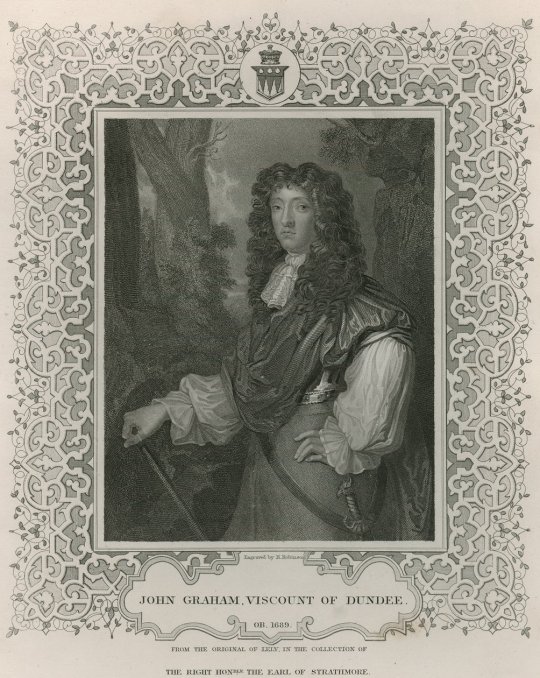
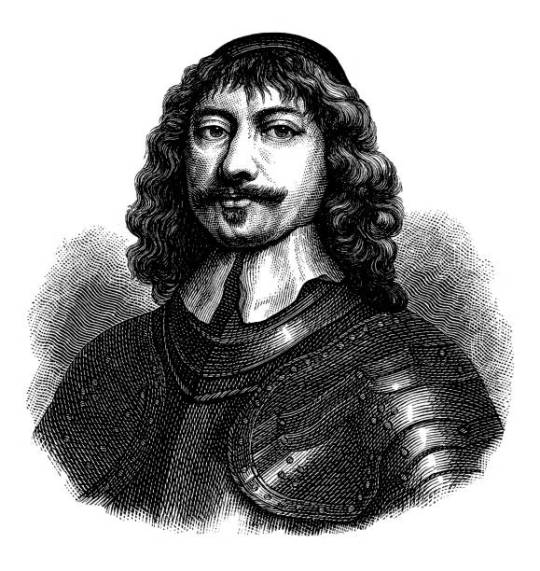
James Graham, 1st Marquess of Montrose was born on October 25th 1612.
I'm lying, Graham's birth date is unknown, it is thought he was born in mid to late October, but a couple of sources give this date, he was educated in Glasgow when he was about 12 before before attending the University of St Andrews at 15.
Initially James Graham took up arms against his King and signed the National Covenant in protest of the introduction of the new prayer book which was seen as a vehicle for introducing Anglicanism to Scotland.
Montrose's loyalties began to waver when he suspected that Archibald Campbell, Earl of Argyll, wanted not just to defend the Kirk, but overthrow the authority of Charles Stuart. Although a sincere Calvinist, Montrose was unable to countenance disloyalty, and he broke with the Covenanters in 1641. In 1642 Graham raised a Royalist army in Scotland to regain the country for Charles and pin down Covenanter troops in their home country.
If you follow my posts you will have read about his exploits on the battlefield in 1644/45, victories at Tippermuir, Aberdeen, (Justice Mills), Inverlochy, Auldearn, Alford and Kilsyth. Of course it wasn't all victories, the slaughter at Philiphaugh in September 1645 he spent the next year on the run employing guerrilla warfare.tactics without making any gains, King Charles , now a prisoner of Cromwell's army, order Graham to lay down his arms. During his years in charge of Charles I army in Scotland not once did Montrose retaliate against his Covenant prisoners, but he was a wanted man and fled to the continent spending three years travelling through Germany, Poland and Scandinavia trying to gain allies and troops to take up arms once more.
After the execution of Charles I in January 1649 he was given the nominal role of Lieutenant of Scotland by Charles II who himself was still in exile
In March 1650 Graham returned to Scotland to avenge his King's death, landing in Orkney and meeting with some German and Danish mercenaries that he had sent beforehand, he was joined by George Hay, 3rd Earl of Kinnoull. Crossing to the mainland, he tried in vain to raise the clans, and on 27 April was surprised and routed at the Battle of Carbisdale by Archibald Campbell, 1st Marquess of Argyll and a grouping of radical Covenanters, known as the Kirk Party. Graham escaped the battlefield and asked for refuge at Ardvreck Castle, Neil MacLeod, laird of Assynt is thought to have been an ally and served with the Royalist army during the previous campaign, he however was not present when they called ,his wife, Christian Monro, daughter of Monro of Lemlair who had fought on the opposite side at Carbisdale. Montrose was confined in the vaulted cellars of the castle.
Montrose was taken to Edinburgh and led through the streets in a cart driven by the hangman. Already under sentence of death for his campaign of 1644-5, Montrose was hanged at the Mercat Cross on 21 May 1650, protesting to the last that he was a true Covenanter as well as a loyal subject.
Montrose's head was fixed on a spike at the Tolbooth in Edinburgh, his legs and arms were fixed to the gates of Stirling, Glasgow, Perth and Aberdeen. His dismembered body was buried in Edinburgh, but Lady Jean Napier had it secretly disinterred. The heart was removed, embalmed, placed in a casket, and sent to Montrose's exiled son as a symbol of loyalty and martyrdom. After the Restoration, Montrose's embalmed heart and bones were buried at the High Kirk of St Giles in Edinburgh in an elaborate ceremony with fourteen noblemen bearing the coffin.
Probably the best place to read a bit more about James Graham is the website here that bares his name https://www.firstmarquisofmontrosesociety.co.uk/
9 notes
·
View notes
Text
Excerpt from this New York Times story:
The long-running battle over whether to allow Pacific Ocean seabed mining took an unexpected turn Thursday when a company disclosed it had been confidentially negotiating a plan with the Trump administration to circumvent a United Nations treaty and obtain authorization from the United States to start mining in international waters.
The proposal, which drew immediate protests from environmental groups and diplomats from some countries, represents a radical shift in the contentious debate over accessing deposits on the sea floor that contain copper, cobalt, manganese and other metals that are needed for electric-car batteries.
The International Seabed Authority, established 30 years ago by an agreement now ratified by more than 160 nations, has jurisdiction over seabed mining in international waters, outside the coastal areas of each nation.
The Seabed Authority has been slowly crafting regulations governing mining, which remains highly contentious because the potential effects of industrial activity on marine life are unknown.
Now the Trump administration, which has already expressed its desire to retake the Panama Canal and assume control of Greenland, is being nudged by the Vancouver-based Metals Company to disregard the Seabed Authority and grant it a license to start mining as soon as 2027.
Gerard Barron, the chief executive at the Metals Company, announced the maneuver Thursday after it became clear that it could still be years before the Seabed Authority finalizes mining regulations.
Contractors from nations including China, India, South Korea, Japan and Poland are also doing exploratory work in international waters under permits from the Seabed Authority, but none of them have been given permission to start large scale mining.
The Metals Company’s application would come in the next several months from a United States-based subsidiary of the company, and it would use a ship registered in the United States. The company would send a giant vacuum-cleaner-like machine 2.5 miles underwater to the ocean floor to suck up potato-size rocks that are loaded with metals.
Mr. Barron said executives had already met with Trump administration officials to promote their plan, which would also require a permit from the National Oceanic and Atmospheric Administration.
3 notes
·
View notes
Video
Capt. Scott Peterson, a tank commander assigned to 1st Battalion, 9th Calvary Regiment, 2nd Armored Brigade Combat Team, 1st Cavalry Division, currently serving with NATO enhanced forward presence Battle Group Poland, supporting the 4th Infantry Division in Europe, ready's his M1A2 Abrams Tank before participating in the Polish Armed Forces Day parade in Warsaw, Poland, Aug. 15, 2023. Service members from across NATO and their respective combat vehicles participated in the event, also known as the Feast of the Polish Armed Forces, to honor active service members, veterans, and fallen Soldiers. (US Army photo by Sgt. 1st Class David Chapman)
(via 209A0748 | Capt. Scott Peterson, a tank commander assigned t… | Flickr)
10 notes
·
View notes